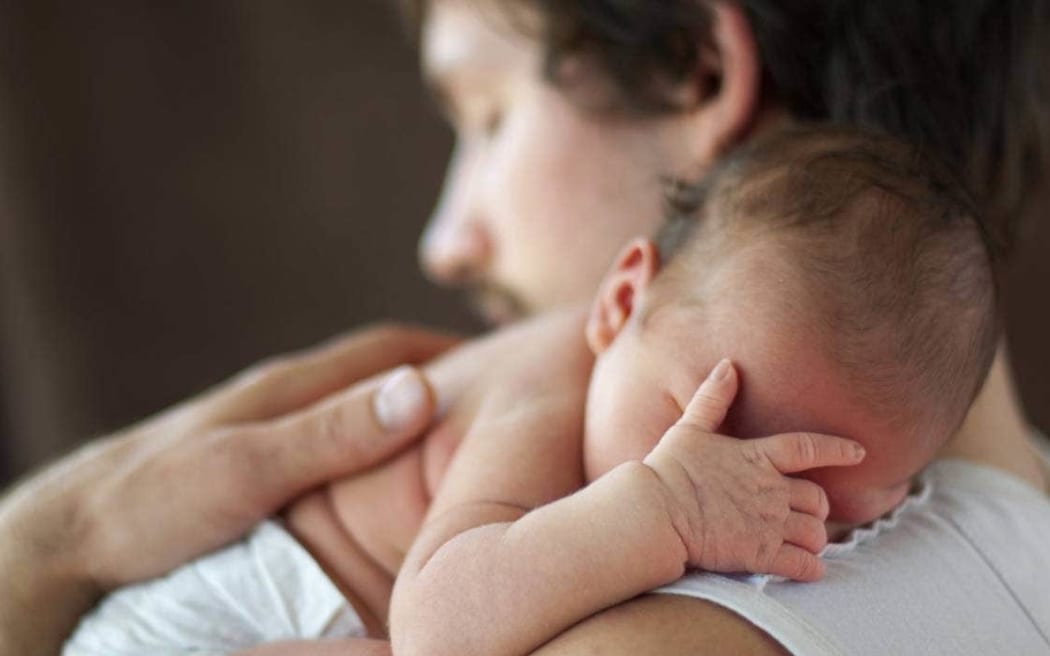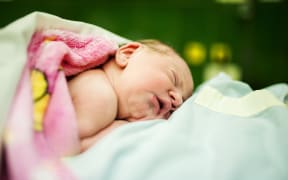
Photo: 123rf
Analysis - As we look towards the peak season for respiratory viruses, the announcement of new respiratory syncytial virus (RSV) immunisation programmes for children in a number of Australian states is welcome news.
Last month Western Australia became the first Australian state or territory to announce a state government-funded immunisation program against RSV. All babies under eight months and those aged eight to 19 months at increased risk of severe RSV are eligible for the shot in WA from this month.
Queensland has since followed suit, announcing a program with similar eligibility criteria. New South Wales also revealed a program, but the immunisation will only be offered to vulnerable babies.
Although these programs are good news, at this stage, babies born in some Australian states will benefit from protection against RSV, while bubs in other states and territories, as well as Aotearoa New Zealand, will not. And RSV isn't the only condition where access to prevention strategies is not equitable.
Protecting infants against severe RSV
RSV is the most common cause of lower respiratory tract infection (bronchiolitis and pneumonia) in infants. Estimates suggest 2-3 percent of infants are hospitalised with RSV each year, which is significantly more than for other infections, including influenza.
Most children hospitalised with RSV are previously healthy babies, although infants with underlying health conditions or born premature are at particular risk. Hospitalisation is also more likely for children of Aboriginal, Torres Strait Islander, Māori or Pacific descent.
The programs in WA, Queensland and NSW will use nirsevimab, a monoclonal antibody. This method provides passive immunity, rather than stimulating the immune system to make antibodies as a vaccine does.
Prior to 2024 the only product available for RSV prevention in babies was palivizumab - another monoclonal antibody - given to a very small group of babies at highest risk of severe RSV.
But because palivizumab needs to be given by injection in hospital every month during the peak RSV season, practical considerations and expense have limited its use in Australia and New Zealand. It's currently not funded in New Zealand at all.
Nirsevimab is generally given at the start of the RSV season, and protects infants for at least five months. Data from Europe and the United States shows nirsevimab cuts RSV hospitalisations among infants by up to 90 percent.
To our knowledge, 10 countries (the US, the United Kingdom, France, Spain, Luxembourg, Belgium, Switzerland, Ireland, the Netherlands and Chile) have launched national nirsevimab immunisation programs to protect infants against RSV.
Australia and New Zealand are lagging behind. While acknowledging supply issues, it's important all the most vulnerable babies in our region have access to the immunisation, rather than babies in some areas and not others.
How does the system work?
The national immunisation programmes in Australia and New Zealand provide funded vaccinations against a range of diseases, such as tetanus, measles and hepatitis B.
Certain vaccines are funded for groups at increased risk of specific infections including people of Aboriginal, Torres Strait Islander, Māori or Pacific descent, and those with underlying medical conditions.
Individual states or territories may finance additional vaccines, while other vaccines may also be recommended and available for individuals to purchase, but not funded publicly. As such, discrepancies exist in which vaccines are offered across different jurisdictions.
In Australia, for a vaccine to be funded on the National Immunisation Program, it first must be registered by the Therapeutics Goods Administration as safe and effective. Then, it needs to be determined worthwhile (clinically beneficial and cost effective) by the Pharmaceutical Benefits Advisory Committee.
In New Zealand, the vaccine needs to be registered by Medsafe and assessed as suitable by Pharmac.
The challenge with nirsevimab is that it's not technically a vaccine. Current legislation hasn't been developed with monoclonal antibodies in mind, complicating nirsevimab's assessment and potential listing on national immunisation programs.
Other examples of vaccine inequity
Meningococcal B is a bacterial infection that can rapidly cause severe illness, and sometimes death. Vaccines which cover other meningococcal strains don't include meningococcal B, which requires a separate vaccine.
Although serious meningococcal infections are uncommon, meningococcal B is the strain most likely to cause serious disease in Australia and New Zealand.
The meningococcal B vaccine is free for children and teenagers in South Australia, Queensland and New Zealand. But in other Australian jurisdictions, it's only free for Aboriginal and Torres Strait Islander children and people with specified medical risk factors (under the National Immunisation Program).
It can be bought privately but costs more than A$100 per dose. This differs from nirsevimab, which isn't available through the private market.
Under Australia's National Immunisation Program, the flu vaccine is free for higher-risk groups, including children under five, adults over 65, and pregnant women.
This year, Queensland and WA are funding a free influenza vaccine for all residents, while healthy residents aged five to 65 in other jurisdictions still need to pay for their vaccine.
There's good rationale for this, especially given last year, flu notifications in children aged 5-14 were among the highest across all age groups. These programs remove a barrier to accessing vaccination.
A national approach
Funding vaccine programmes only for those with specific risk factors can be much cheaper than universal free access, but may increase barriers to vaccine coverage.
For example, pneumococcal conjugate vaccines, which protect against severe pneumonia and blood infections, were initially only provided to high-risk infants, including First Nations children. But research found more Aboriginal and Torres Strait Islander children were vaccinated when the vaccine was available for all infants, rather than during the targeted program.
Beyond Australia and New Zealand, global vaccine inequity is a big problem. The cost of vaccines is a considerable barrier for low- and middle-income countries.
Diseases don't respect state or national borders. We must ensure where a person lives doesn't determine whether or not they can be protected.
* Archana Koirala is a paediatrician and infectious diseases specialist at the University of Sydney, Brendan McMullan is a conjoint senior lecturer at the School of Women's and Children's Health, UNSW Sydney, Christopher Blyth is a paediatrician, infectious diseases physician and clinical microbiologist, at the Telethon Kids Institute, The University of Western Australia, Emma Best is a senior lecturer in the Department of Child and Youth Health at University of Auckland, Waipapa Taumata Rau and Fiona Russell is a senior principal research fellow; paediatrician; infectious diseases epidemiologist; and vaccinologist at The University of Melbourne.
- This story was originally published by The Conversation.






